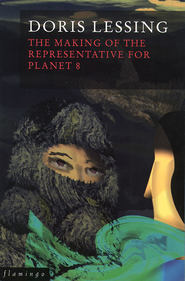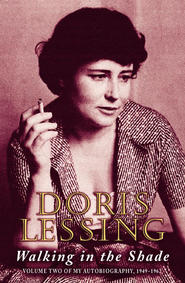По всем вопросам обращайтесь на: info@litportal.ru
(©) 2003-2024.
✖
On Cats
Настройки чтения
Размер шрифта
Высота строк
Поля
He stood in his tiny shop behind racks of swedes, turnips, potatoes, onions, carrots, cabbages – other vegetables, as happens in such streets, being unobtainable unless frozen – and watched the children rushing about the streets, saying unkind things about their mothers.
He was in favour of the grey cat’s being ‘done’. Too many people in the world, too many animals, too little food, nobody bought anything these days, where would it all end?
I rang up three vets to ask if it was necessary for a cat’s womb and tubes to be removed – could they not tie up her tubes and leave her sex, at least? All three, with emphasis, insisted the best thing was to have the whole lot out. ‘The whole job lot,’ said one; exactly the same phrase was used to a woman friend of mine by a gynaecologist. ‘I’ll get rid of the whole job lot for you,’ said he.
Very interesting.
In Portugal, say H. and S., who are Portuguese, when the bourgeois ladies visit for their tea parties, they talk about their operations and their female problems. The phrase they use for these organs is exactly the same as that used for fowl giblets: ‘My giblets, your giblets, our giblets.’
Very interesting indeed.
I put the grey cat in the cat basket and took her to the vet. She had never been shut up before, and she complained – her dignity and self-respect were wounded. I left her, and came back late that afternoon to collect her.
She was in the cat basket, smelling of ether, limp, dizzy, sick. A large patch had been shaved off one side, exposing her whitish-grey skin. Across the skin a two-inch red gash, sewn up neatly with gut. She looked at me with enormous dark shocked eyes. She had been betrayed and she knew it. She had been sold out by a friend, the person who fed her, protected her, whose bed she slept on. A terrible thing had been done to her. I couldn’t bear to look at her eyes. I took her home in a taxi, where she moaned all the way – a hopeless helpless frightened sound. At home, I put her in another basket, not the cat basket with its memories of the vet and pain. I covered her, put the basket by a radiator, and sat with her. It was not that she was very ill, or in danger. She was in a bad state of shock. I do not think any creature can ‘get over’ an experience like this.
She stayed there, not moving at all, for two days. Then, with difficulty, she used the cat box. She drank a little milk and crept back to lie down.
At the end of a week the stubble grew back over the ugly scarred patch. Soon I had to take her back to the vet to have her stitches taken out. This was worse than the first journey, because now she knew the basket, the motions of the car, meant pain and terror.
She screamed and struggled in the basket. The taxi man, as helpful as they always are, in my experience, stopped his taxi for a while to let me try and soothe her, but then we agreed it was better to get it over with. I waited while the stitches came out. She was forced, struggling, back into the basket, and I brought her back in the same taxi. She made water from fear, and cried.
The taxi man, a cat-lover, said why couldn’t those doctors invent a birth control for cats? It was not right, he said, for us to steal their real natures from them, to suit our convenience.
When I got inside the door and opened the basket, grey cat, mobile now, fled out of the house and on to the garden wall under the tree, her eyes again wide and shocked. She came in at night to eat. And slept, not on my bed, but on the sofa. She would not let herself be petted for days.
Inside a month from the date of that operation, her shape changed. She lost, not slowly, but fast, her slenderness, her grace; and she coarsened everywhere. Her eyes subtly loosened, crinkled; the shape of her face broadened. She was, all at once, a plump, if pretty, cat.
As for the change in her nature, well, that might have been, probably was, partly due to the other blows life dealt her at the same time – losing her friend, the young tom, losing her kittens, and the advent of the black cat.
But it did change. Her confidence had been struck. The tyrannical beauty of the household had vanished. The peremptory charm, the heart-breaking tricks of head and eye – all gone. She did, of course, return to old cajoleries, rolling back and forth on her back to be admired, pulling herself under the sofa – but they were tentative for a long time. She was not sure they would please. She was not sure of anything for a long time. And so, she insisted. A strident note entered her character. She was tetchy over her rights. She was spiteful. She had to be humoured. She was bad-tempered with her old admirers, the toms on the wall. In short, she had turned into a spinster cat. It is a dreadful thing we do to these beasts. But I suppose we have to do it. The little black cat, for a variety of sad reasons, was homeless and joined our household. It would have been better for harmony if she had been a male cat. As it was, the two she-cats met as enemies, crouched watching each other for hours.
Grey cat, half her side still stubbly from the razor, refusing to sleep on my bed, refusing to eat until coaxed, unhappy and unsure of herself, was determined about one thing: that the black cat was not going to take her place.
Black cat, on her side, knew she was going to live here, and would not be chased away. She did not fight: grey cat was bigger and stronger. She got into the corner of a seat, her back protected by a wall, and never took her eyes off grey cat.
When her enemy went to sleep, black cat ate and drank. Then she surveyed the garden with which she had already become acquainted from the end of a smart leash and collar, examined it carefully. Then she examined the house, floor by floor. My bed, she decided, was the place for her. At which grey cat leaped up, spitting, and chased the black cat away, took her place on my bed. Black cat then took up a position on the sofa.
Black cat’s character is altogether different from grey cat’s. She is a steady, obstinate, modest little beast. She knew no coquetry until she saw grey cat’s: did not pose, flirt, roll, scamper, or show off.
She knew she was not the first cat of the household; grey cat was the boss cat. But as second cat she had rights, and insisted on them. The two cats never fought, physically. They fought great duels with their eyes. On either side of the kitchen they sat; green eyes, yellow eyes staring. If black cat did something over the edge of what grey cat thought was tolerable, grey cat gave a faint growl, and made subtle threatening movements with her muscles. Black cat desisted. Grey cat slept on my bed; black cat must not. Grey cat could sit on the table; but not black cat. When visitors came, grey cat was first at the door. And grey cat would not eat, unless separately, out of a newly washed saucer, with newly cut food, and in a fresh place in the kitchen. For black cat, the old food corner would do.
Black cat submitted to all this, and with the humans in the house was modestly affectionate, wreathed our legs, purred, talked – she is half-Siamese too; but always with an eye on grey cat.
This behaviour did not accord with her appearance. Grey cat’s looks and her behaviour have always gone together: her looks have dictated her character.
But black cat is ambiguous. For instance, her size. She is a small slender cat. When she has kittens, it seems incredible there could be room for them. But pick her up: she is solid, heavy; a strong close-packed little beast. She does not look at all modest, domestic; and as maternal as she later turned out to be.
She is elegant. She has a curved noble profile, like a cat on a tomb. When she sits straight, paws side by side, staring, or crouches, eyes half-masked, she is still, remote, withdrawn to some distant place inside herself. At such times she is sombre, inspires awe. And she is black, black, black. Black glossy whiskers, black lashes, not a white hair anywhere. If grey cat’s designer was a master of subtlety, of loving detail, then black cat’s said: I shall create a black cat, the quintessence of black cat, a cat from the Underworld.
It took about two weeks for these antagonists to establish rules of precedence. They never touched, or played, or licked each other: they created a balance where they were always conscious of each other, in watchful hostility. And that was sad, remembering how grey cat and her grown child had played and cleaned each other and wound about each other. Perhaps, we thought, these two might learn affection in time.
But then black cat got sick, and poor grey cat’s hard-fought-for position was lost completely.
Black cat had a cold, I thought. Her bowels were out of order: she made frequent trips to the garden. She was sick several times.
If I had taken her to the doctor then, she would not have been so very ill. She had enteritis; but I did not know how bad that is, and that very few cats get over it, not, at least, while they are still half-kitten. On the second night of her illness I woke and saw her crouched in a corner – coughing, I thought at first. But she was trying to be sick – with nothing left to be sick with. Her jaws and mouth were covered with white froth, a sticky foam which would not easily wipe off. I washed it off. She went back to the corner, crouching, looking in front of her. The way she sat was ominous: immobile, patient, and she was not asleep. She was waiting.
In the morning I took her to the cat hospital around the corner, by now bitten by remorse because I had not taken her earlier. She was very ill, they said; and from the way they said it, I knew she was not expected to live. She was badly dehydrated and had a roaring temperature. They gave her an injection for the fever, and said she must be made to take liquid – if possible. She would not drink, I said. No, they would not, they said, past a certain stage in the illness, which was characterized by another symptom: cats decide to die. They creep into a cool place somewhere, because of the heat of their blood, crouch down, and wait to die.
When I took black cat home, she stalked gauntly into the garden. It was early autumn and cold. She crouched against the chill of the garden wall, cold earth under her, in the patient waiting position of the night before.
I carried her in, and put her on a blanket, not too close to a radiator. She went back to the garden: same position, same deadly, patient position.
I took her back and shut her in. She crept to the door, and settled down there, nose towards it, waiting to die.
I tempted her with water, water and glucose, meat juices. It wasn’t that she refused them: she had gone beyond them; food was something that she had left behind. She did not want to come back; she would not.
Next day the people at the hospital said her temperature was still very high. It had not come down. And she must drink.
I brought her home and thought it out. Clearly, keeping black cat alive would be a full-time job. And I was busy. And, as people in the house were pointing out, she was only a cat.
But she was not just a cat. For a variety of reasons, all of them human and irrelevant to her, she must not be allowed to die.
I mixed a nasty but useful solution of glucose, blood and water, and fought black cat.
She would not open her jaws to take it. A small feverish creature, shadow-light, having lost all her healthy solidity of flesh, she sat, or rather, collapsed, in my lap, and shut her teeth against the spoon. It was the strength of weakness: no, no, no.
I forced her teeth open, using her canines as levers. The liquid was in her throat, but she would not swallow. I held her jaws up, and the liquid ran out of the sides of her mouth. But some of it must have gone down, because after the third, fourth, fifth spoonful, she made a faint swallowing movement.
So that was it. Every half hour. I took the poor creature from her corner, and forced liquid down her. I was afraid of hurting her jaw, because of using so much pressure on her projecting teeth. Her jaw was probably very painful.
That night I put her by me on the bed, and woke her every hour. Though she was not really asleep. She crouched, the heat from the fever sending waves all around her, eyes half-open, suffering the end of her life.
Next day the fever had still not gone down. But the day after it had; and now the clinic gave her glucose injections. Each injection left a large soft bulge under her stiff hide. But she did not care; she cared about nothing at all.
Now that the fever was gone, she was very cold. I wrapped her in an old towel, and put her near the radiator. Every half hour, black cat and I fought. Or rather, black cat’s intention to die fought with my intention that she should not.
At night, she crouched by me on the bed, trembling with the sad faint inner trembling of extreme weakness, a towel over her. Wherever I put her she stayed; she did not have the strength to move. But she would not open her jaws to take liquid. She would not. All her remaining strength went into saying no.
Ten days went by. I took her to the cat hospital every day. It was a place where young vets are trained, a teaching hospital. The people of the neighbourhood take dogs and cats every morning, between nine and twelve. We sat on rows of benches in a large bare waiting-room, with the sick animals fretting, whining, barking. All kinds of friendships were struck up on account of the illnesses of these animals.
And all kinds of small sad incidents stay in my mind. For instance, there was a woman, middle-aged, her hair dyed light blonde, over a haggard face. She had the most beautiful large dog which was sleek with food and attention. There could not have been much wrong with the dog, which was lively, and barked and was proud of itself. But the woman stood in a light suit, always the same suit, without a coat. It was a little cold, not very, and the rest of us wore light dresses or sweaters. But she shivered uncontrollably; the flesh on her arms and legs was not there. It was clear that she did not have enough to eat, and that her money and time went on the dog. To feed a dog of that size costs a lot of money. A cat costs, I reckon, ten shillings a week, even if it isn’t a spoiled beast, as ours both are. That woman lived through her dog. I think everyone felt it. The people in this area are mostly poor: the way they looked at her, shivering there with her pampered beast, and then invited her to jump the queue to get out of the cold into the building while we waited for the doors to open, said that they understood her situation and were sorry for her.
And an incident at the other extreme – or apparently so. A fat bulldog – but very fat, rolls of flesh all over it – was brought in by a fat boy of about twelve. The doctors had the dog on the examination table, and explained to the boy that a dog must eat just so much, and only once a day: there was nothing wrong with it but overfeeding. And it must not be fed bits of cake and bread and sweets and… The fat boy repeated, over and over again, that he would go back and tell his mother, he would tell his mother, he said; but what she wanted to know was, why did the dog wheeze and pant, after all, it was only two years old, and it would not run and play and bark as other dogs did. Well, said the doctors patiently, it was as easy to overfeed an animal as to underfeed it. If you overfed a dog, you see…
Extraordinarily patient they are; and very kind. And tactful. The things that must be done to animals which would upset their owners take place behind closed doors. Poor black cat was taken off for her injections and was gone twenty minutes, half an hour, before being returned to me with the subcutaneous water lumping her stiff dirty fur.
She had not licked herself, cleaned herself, for days. She could not move. She was not getting better. If all my attention, if all the skills of the clinic made no difference, well, perhaps after all she should be allowed to die, since that was what she wanted. There she sat, day after day, under the radiator. Her fur was already like a dead cat’s, with dust and fluff in it; her eyes were gummy; the fur around her mouth was solid with the glucose I tried to pour into her.











